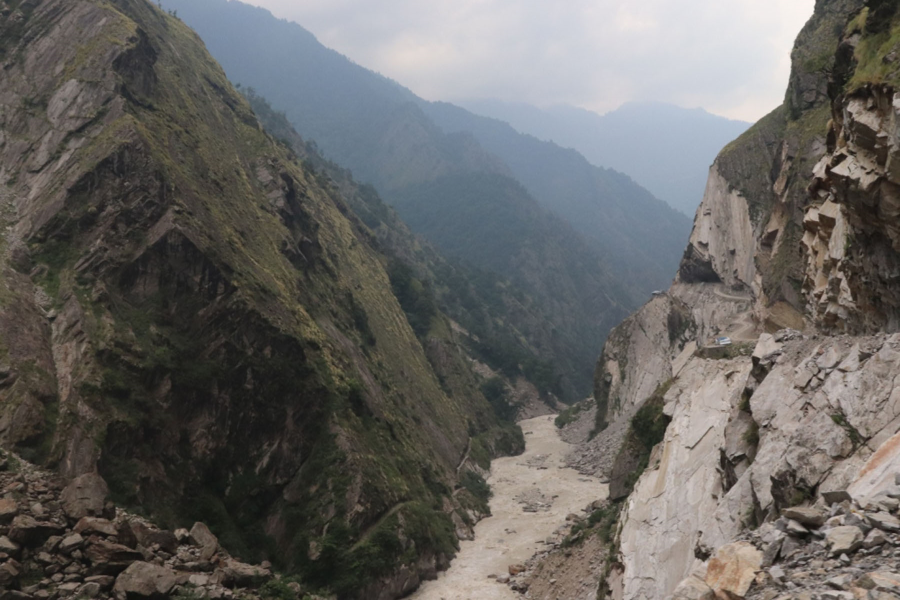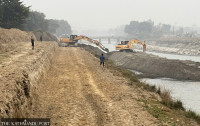National
Boundary issues with India require a lasting solution that addresses all disputes, say analysts
As seeking international arbitration or deploying armed forces could only further complicate matters, better solution is a diplomatic approach, they say.
Anil Giri
Six months after the Kalapani uproar, Nepal is in the midst of yet another boundary row with the southern neighbour—this time over India building a road via Lipulekh, a territory that Nepal claims as its own.
As boundary disputes like these are a consistent feature of Nepal’s relationship with India, it is time for the authorities to seek a more lasting and permanent solution, say foreign policy analysts.
Nepal’s boundary disputes with India are localised in four primary areas—Kalapani, Lipulekh, Limpiyadhura and Susta—but there are other sporadic issues due to the open border, a lack of demarcation, and close linkages between the citizens of both countries in the border areas.
Even the current dispute over Lipulekh is not new, given that Nepal was aware of the fact that India had been building a road via Lipulekh pass for the past 12 years, if Foreign Minister Pradeep Gyawali’s statements before the Parliamentary International Relations Committee on Sunday are anything to go by.
“We are not saying that the boundary dispute should be resolved now or tomorrow,” said Prakash Sharan Mahat, a former foreign minister. “Our only concern is that successive governments have not taken up this matter seriously. If every government had raised the issue with India on a priority basis, it would’ve been resolved much earlier.”
Analysts say that Nepal has three real options when dealing with India over the border—seeking international arbitration, deploying the military to secure areas, or pursuing a diplomatic approach.
At Sunday’s meeting of the Parliamentary State Affairs and Good Governance Committee, a number of parliamentarians asked the government to pursue international arbitration in the boundary dispute with India, but the proposal was rejected by both Foreign Minister Pradeep Gyawali and ruling party chair Pushpa Kamal Dahal.
“The time has not come to go in that direction,” Dahal said at the meeting.
Gyawali echoed Dahal, saying that internationalisation would only invite more challenges when dealing with a friendly neighbour.
Although parliamentarians in the past have proposed increasing the presence of Nepali armed forces at the border as a response to Indian encroachment, political leaders have rejected that idea too, saying that will only aggravate the situation.
In November, several parliamentary committees had instructed the government to deploy security forces to Kalapani. In February, Defence Minister Ishwar Pokhrel even conducted an aerial inspection around Kalapani to assess the possibility of deploying security forces. No security personnel were ever deployed.
Given that these two options are not viable, the only alternative left is to pursue the issue diplomatically, which is what successive governments should have been doing, say former foreign ministry officials.
“In the last 12 years, very few governments have raised the boundary issue politically and diplomatically with India, so India thought that it was not in Nepal’s priority, which led them to move ahead with their own plans,” said Mahat, the former foreign minister.
India and Nepal had formed two permanent bodies at the Foreign Secretary and Surveyor General levels to settle the longstanding boundary disputes. Apart from these official bodies, Nepali chief district officers and Indian district magistrates are authorised to handle minor frictions along the open border.
The foreign secretary-level body, formed in 2014 by the Nepal-India Joint Commission at the Foreign Minister level, is mandated to resolve boundary disputes in Susta and Kalapani. The Surveyor General level mechanism, also formed by the same commission, is mandated to construct and repair boundary pillars, clearance of ‘no man’s land’, and prepare a list of issues related to the cross-holding of properties and other technical matters.
Since being formed, the secretary-level body has not met a single time, which can largely be attributed to a governmental failure to accord priority to the meeting, say analysts.
A diplomatic approach is necessary, but all disputes cannot be dealt with in a similar manner, say analysts and officials.
The Lipulekh dispute currently involves encroachment in order to build a link road to Mansarovar in Tibet, necessitating the presence of China in discussions, said Dahal.
“The present dispute in Lipulekh is a trilateral issue,” Dahal said on Sunday at the parliamentary committee. “Since India and China agreed to develop this route, there must be an agreement between Nepal, India and China.”
The Kalapani issue is more difficult as it involves the presence of the Indian military. According to Home Minister Ram Bahadur Thapa, who also spoke at Sunday’s parliamentary committee meeting, the political leadership sometime after 1962 allowed India to station its security forces in Kalapani and now their numbers are in the thousands, making it very difficult to remove them.
The disputes over Limpiyadhura and Susta concern the actual demarcation of the boundary. While Nepal claims all land east of the Mahakali river, as per the Sugauli Treaty, India claims that the source of the Mahakali river lies east of Limpiyadhura and does not fall within Nepal’s territory.
In Susta, which lies in the southern district of Nawalparasi, the Nepal-India boundary was agreed upon to be the Narayani (Gandak) river. But the river has changed course, leading to disputes over how much land now belongs to Nepal and India.
The Lipulekh issue has promoted both sides to issue statements and rebuttals, but according to Foreign Ministry officials, Nepal will not be seeking a piecemeal approach this time around.
In its statement on Saturday objecting to India’s opening of the rolad link via Lipulekh, the Foreign Ministry, referring to India’s inclusion of Kalapani within its borders, said the government of Nepal twice proposed dates for a meeting of the foreign secretaries of the two countries, as mandated by their leaders.
“It is still awaiting a response from India,” the ministry stated.
Hours later, the Indian Ministry of External Affairs issued a statement, saying it had “seen the press release dated May 9, 2020 issued by the Ministry of Foreign Affairs of Nepal pertaining to the inauguration of a road in India”.
“The road follows the pre-existing route used by the pilgrims of the Kailash Mansarovar Yatra. Under the present project, the same road has been made pliable for the ease and convenience of pilgrims, locals and traders,” said India.
It was for the first time, since the Kalapani issue emerged, India has acknowledged the calls for talks.
“Both sides are also in the process of scheduling Foreign Secretary level talks which will be held once the dates are finalised between the two sides after the two societies and governments have successfully dealt with the challenge of Covid-19 emergency,” said India’s Ministry of External Affairs.
An official at the Foreign Ministry also said that Nepal will seek a long-term solution to the dispute once the Covid-19 crisis is over.
“But that will take more time, possibly years,” the official told the Post wishing not to be named given the sensitivity of the matter.
But that is easier said than done, say foreign policy analysts, given the trust deficit between Nepal and both its neighbours.
“The Nepal government has failed to protect its lands and this new episode shows we are running on a trust deficit with both India and China,” said former foreign minister Ramesh Nath Pandey. “Without restoring confidence with both our neighbours, this particular border row is not going to be resolved. The only approach here is to initiate a credible diplomatic effort.”




 12.12°C Kathmandu
12.12°C Kathmandu















